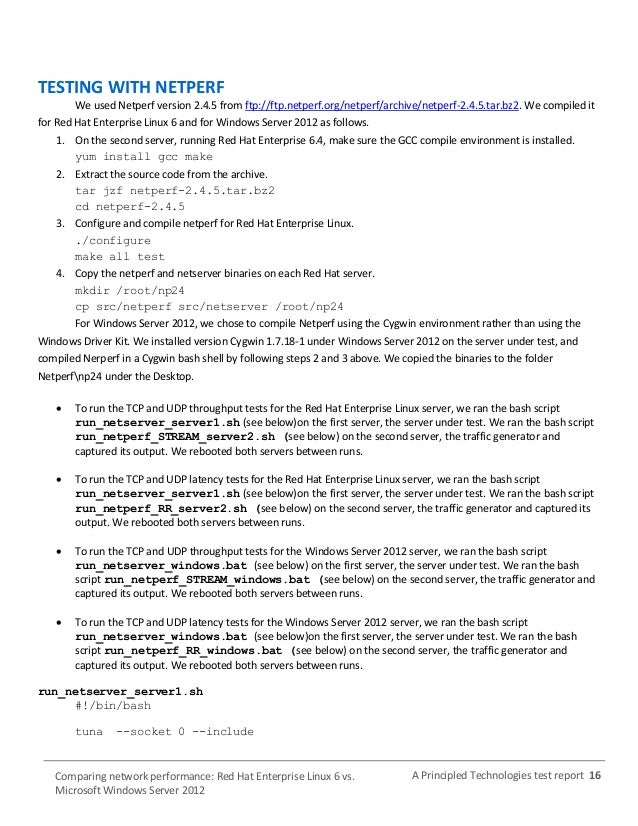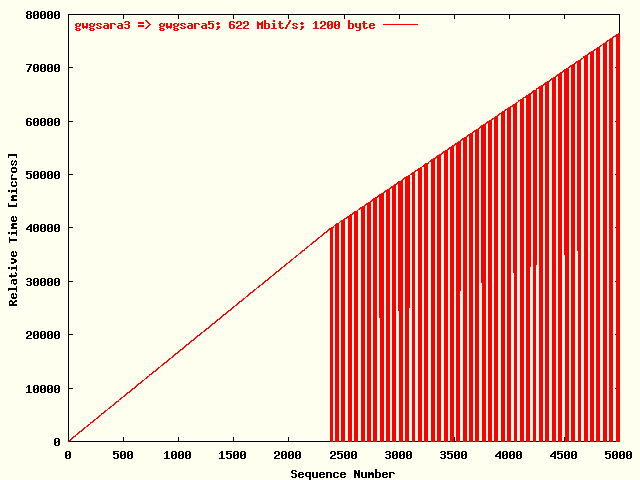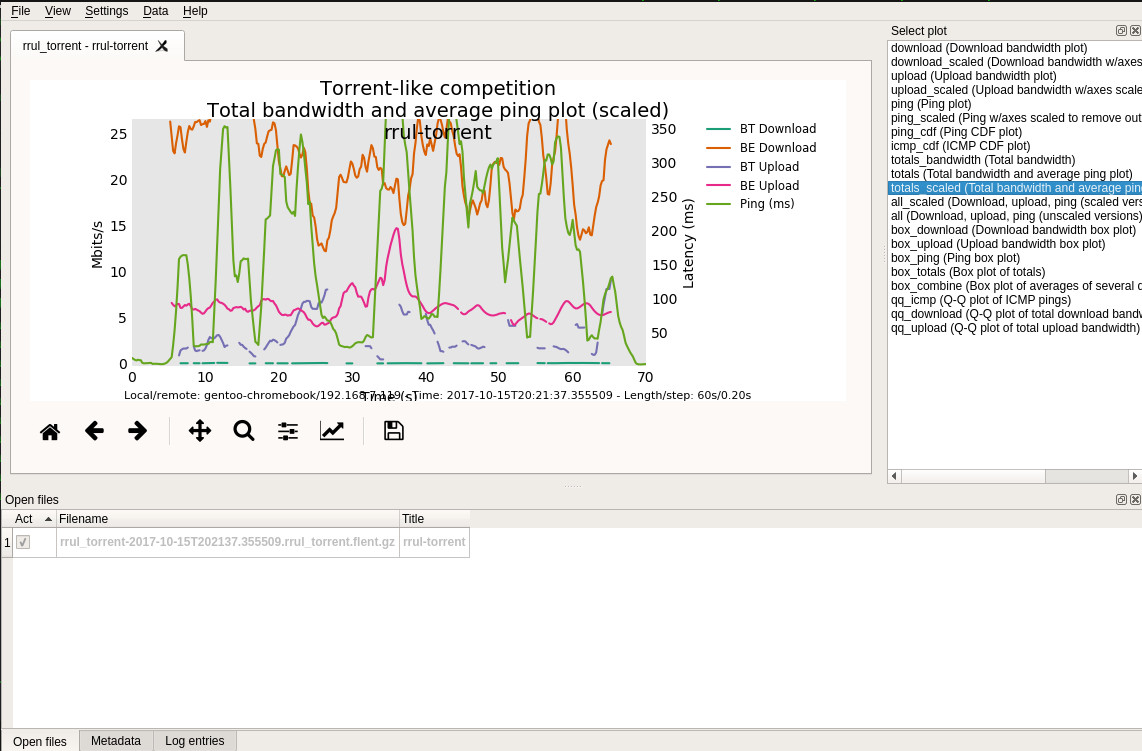- Install Netperf On Windows Download
- Install Netperf On Windows Free
- Install Netperf On Windows Download

Netperf-2.7.0-3-1-x8664.eopkg: Netperf is a benchmark that can be used to measure the performance of many different types of networking: Solus Unstable x8664 Official: netperf-2.7.0-3-1-x8664.eopkg: Netperf is a benchmark that can be used to measure the performance of many different types of networking. Download nPerf speed test for Windows 10 for Windows to more than a simple speed test, nPerf brings you the best and the fullest mobile connection quality measurement tool up to 1 Gb/s speeds. NPerf speed test is compatible with all broadband and mobile connections: ADSL, VDSL, cable, optical fiber FTTH / FTTB, satellite, wifi, wimax, cellular 2G / 3G / 4G (LTE), 5G. The nPerf speed test has been designed by telecom enthusiasts to enable you to accurately measure the speed of your Internet connection easily, in only one click!
Flent is a network benchmarking tool which allows you to:
It is also known that netperf has compiled using the Windows DDK. Here is a skeleton of the instructions to do so: Steps are: A) Install the Windows driver developer kit (if not already done). B) open a Cmd windows (i.e., a DOS box) for the target environment. (target OS version; free vs checked build; x86, AMD64, or IA64). Netperf-2.7.0-3-1-x8664.eopkg: Netperf is a benchmark that can be used to measure the performance of many different types of networking: Solus Unstable x8664 Official: netperf-2.7.0-3-1-x8664.eopkg: Netperf is a benchmark that can be used to measure the performance of.
- Easily run network tests composing multiple well-known benchmarking tools into aggregate, repeatable test runs.
- Explore your test data through the interactive GUI and extensive plotting capabilities.
- Combine and aggregate data series and produce publication quality graphs.
- Capture metadata from local and remote hosts and store it along with the plot data.
- Collect secondary data series such as CPU usage, WiFi, qdisc and TCP socket statistics and plot it with the main dataset.
- Specify batch experiment runs to completely automate your testing regime.
Flent is written in Python and wraps well-known network benchmarking tools (such as netperf and iperf) into aggregate, repeatable tests, such as a number of tests for Bufferbloat.
There's a short paper (pdf) and a blog post describing some of the design goals of Flent.
Getting started
Install Flent as per the instructions below, then see the Quick-start section to get going.
For more information, see the full documentationor search for specific content.
Installing Flent
Installing Flent can be done in several ways, depending on your operating system:
- Debian and Ubuntu:
apt install flent. To install netperf, enable the non-free repository. - Fedora:
dnf install flent. - Gentoo:
emerge net-analyzer/flent. - Ubuntu pre-18.04: Add the tohojo/flent PPA.
- Arch Linux: Install Flent from the AUR.
- FreeBSD:
pkg install flentto install the package orcd /usr/ports/net/flentto install the port. - Other Linux and OSX with Macbrew: Install from the Python Package Index:
pip install flent
Get involved
Getting involved is easy:
- Browse the source code or issue tracker on GitHub
- Subscribe to the mailing lists
Download: http://www.chriswolf.com/download/netperf.zip
Bottleneck Battle
When you suspect a performance problem is related to a network bottleneck, use this simple tool to verify your suspicions.

- By Chris Wolf
- 09/13/2005
--Jim
Jim: At first I was hesitant to answer your question. Finger pointing has been a long standing tradition in IT, and I wasn’t sure that I wanted to do anything to upset that delicate balance. Many of my friends like to 'blame the other guy' when they find themselves in a jam. This gives them a few hours (or sometimes even days!) to solve a problem while the customer verifies that it isn’t with another vendor.

Now before all of you jump down my throat, I am not condoning this behavior! While blaming the other guy could be used as a diversion tactic, most administrators are often very confident in their abilities and, as a result, find in hard to believe that a performance problem exists on their network. When you find yourself in this situation and are looking to narrow down the cause of a problem, I have had a lot of success using the open source tool Netperf, which was developed by HP engineer Rick Jones. Netperf is a light-weight vendor neutral tool that will give you instantaneous network throughput between two points.
|
The latest version of Netperf can be downloaded from the official Netperf site. Note that the download site will provide access to the Netperf source code. You will need to compile it in order to run it. Netperf can be successfully compiled to run on Windows, Unix or Linux. If you’re not in a compiling kind of mood, you can download a compiled copy of the netperf tools from my Web site.
Run netserver.exe on one system and netclient.exe on the other system to arrive at a throughput value between the two systems.
By default, when you run Netserver, it uses port 12865. With the –p switch, you can specify a different port for the command to use. Once executed, Netserver will continue to run until a client connects to it.
While there are numerous options that accompany the Netclient command, for performing throughput tests, you only need to be concerned with –H and possibly –p if testing throughput between two remote sites through a firewall. If you’re interested in the numerous other switches available with Netperf, go here.
Install Netperf On Windows Download
Once you have the netserver.exe file on one system and the netclient.exe file on the second system, you would perform these steps to test throughput:
Install Netperf On Windows Free

1. On the first system, access the command prompt and run netserver.exe (you must run the command from the folder where it resides).
2. From the second system, run netclient.exe –H from the command prompt.
Wait a few seconds and you will see the throughput information displayed on the system that ran Netclient. You will also see the netserver command execution automatically terminate on the first system.
Here is a sample of the command and resultant output from running Netclient:
G:Netperf>netclient -H fs1.mcpmag.com
TCP STREAM TEST to fs1.mcpmag.com
Recv Send Send
Socket Socket Message Elapsed
Size Size Size Time Throughput
bytes bytes bytes secs. 10^6bits/sec
Install Netperf On Windows Download
8192 64512 64512 10.00 97.30
In my example, I first went to the server named fs1.mcpmag.com and ran the command netserver.exe. I then went to another system and ran 'netclient –H fs1.mcpmag.com.' The resultant throughput between the two systems was 97.3 Mbps. This demonstrated that the 100Mbps LAN connecting the two systems was running fine. A low throughput value would identify a network bottleneck. At that point, you would need to go through the usual suspects (NIC drivers, duplex mode, speed, switch settings, etc.) to determine the root cause of the problem.

If you are having to install network software on another organization’s network, Netperf can quickly give you a throughput measurement that will allow you to either identify or rule out the network as being problem. I like Netperf because I can run in on nearly any OS. I’m sure that many of you have a favorite network performance testing tool. If so, please share the love and post information about the tool as a comment to this column.
About the Author
Chris Wolf is a Microsoft MVP for Windows --Virtual Machine and is a MCSE, MCT, and CCNA. He's a Senior Analyst for Burton Group who specializes in the areas of virtualization solutions, high availability, storage and enterprise management. Chris is the author of Virtualization: From the Desktop to the Enterprise (Apress), Troubleshooting Microsoft Technologies (Addison Wesley), and a contributor to theWindows Server 2003 Deployment Kit (Microsoft Press).learningstore-20/'>Troubleshooting Microsoft Technologies (Addison Wesley) and a contributor to the Windows Server 2003 Deployment Kit (Microsoft Press).